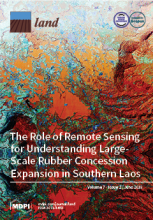Land Library
Welcome to the Land Portal Library. Explore our vast collection of open-access resources (over 74,000) including reports, journal articles, research papers, peer-reviewed publications, legal documents, videos and much more.
/ library resources
Showing items 55 through 63 of 86.Humanitarian and development organizations working in conflict-affected settings have a particular responsibility to do no harm and contribute to the wellbeing of the population without bias.
Outmigration has become a key livelihood strategy for an increasing number of rural households, which in turn has a profound effect on land management.
The paper investigates whether farm dwellers in the KwaZulu-Natal (KZN) province of South Africa are subject to a “double exposure”: vulnerable both to the impacts of post-apartheid agrarian dynamics and to the risks of climate change.
We studied livelihood changes and poverty dynamics over a 25-year period in two villages in central Tanzania. The villages were, from the early 1990s and 2000s, strikingly poor with between 50% and 55% of families in the poorest wealth groups.
Rangelands throughout sub-Saharan Africa are currently undergoing two major pressures: climate change (through altered rainfall and seasonality patterns) and habitat fragmentation (brought by land use change driven by land demand for agriculture and conservation).
This paper investigates the drivers and dynamics of livelihood and landscape change over a 30-year period in two sites in the communal drylands of Zimbabwe (Marwendo) and South Africa (Tshivuhulani).
This paper addresses pastoral resilience by drawing out the coping strategies and mechanisms utilized by the Maasai Pastoralists through a food system approach, based on the study findings of an anthropological study of pastoralism as a food system in Laikipia County, Rift Valley, Kenya.
Community-managed reserves (CMRs) comprise the fastest-growing category of protected areas throughout the tropics. CMRs represent a compromise between advocates of nature conservation and advocates of human development. We ask whether CMRs succeed in achieving the goals of either.
Smallholder farmers and indigenous communities must cope with the opportunities and threats presented by rapidly spreading estate crops in the frontier of the agricultural market economy.




